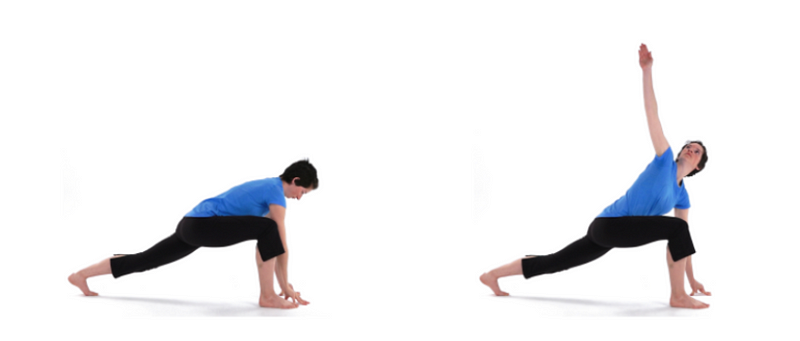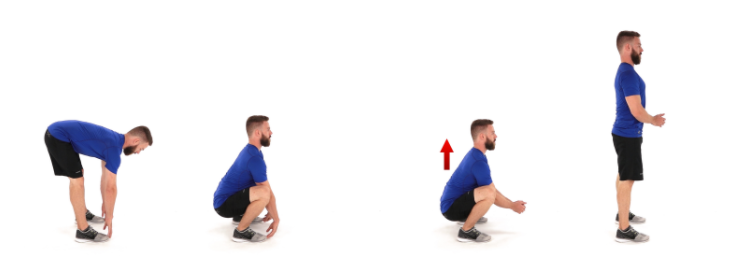How to Stay Agile and Active as You Age: A Kinesiologist's Guide
Written on
Chapter 1: Understanding Aging and Its Effects on Mobility
While we can strive for a healthy lifestyle, the reality is that aging is unavoidable. As time passes, various bodily functions inevitably decline, leading to valid concerns about increasing stiffness.
As we age, our fibroblasts become less efficient at producing glycosaminoglycans (GAGs). These crucial compounds help retain water, providing lubrication to our joints and enhancing shock absorption. The result is a noticeable decrease in hydration in our cartilage, bones, and muscles, which contributes to heightened stiffness.
With less GAG production, we tend to feel discomfort more frequently. Unfortunately, many people respond by becoming less active, mistakenly believing this will prevent further issues. I have seen numerous clients stop running due to stiffness, but this sedentary approach often exacerbates soreness, as it restricts natural movement of the tissues.
Although we cannot halt the aging process, we have a powerful ally at our disposal: movement. Simple actions, such as getting up from your chair or taking a short walk, can significantly impact your stiffness levels. Let’s explore three effective strategies to incorporate more movement into your daily routine, which may surprise you in how much control you can exert over your aging journey!
Here’s to enjoying pain-free running for many years ahead!
Chapter 2: Three Essential Habits to Combat Stiffness
While any form of movement can help alleviate stiffness, we will focus on three key habits that can enhance your well-being over time. The first habit is foundational, while the latter two provide specific exercises to support your musculoskeletal health.
As always, consult your healthcare provider if you have any concerns regarding the advice provided here. Joint health is crucial, so discussing your plans with a knowledgeable professional is vital. Without further ado, let’s dive in!
Section 2.1: Break Up Sedentary Behavior
One of the most common misconceptions is that merely attending the gym a couple of times a week is sufficient for joint health. In reality, reducing stiffness and enhancing well-being requires daily commitment. Here are seven strategies to help you integrate more movement into your day:
- Stand up every 30 minutes, even if just for half a minute. If you take away one thing from this article, let it be this.
- Consider investing in a standing desk, but remember to take movement breaks every 30 minutes.
- Use your lunch break for a short walk.
- Stand during phone calls if possible (unless it feels awkward).
- Park further away from your workplace to incorporate walking.
- Fill your water bottle halfway to encourage frequent refills, prompting more movement.
- Set timers for sedentary activities, or incorporate exercises like squats while watching TV.
Remember, these are just a few ideas among many!
“It is not good enough to exercise for 30 minutes a day and be sedentary for 23 and a half hours.” — Dr. David Alter
Section 2.2: Embrace Whole-Body Mobility
While standing and walking can help reduce stiffness, an intentional mobility practice offers even greater benefits. Below are three of my favorite movements that can be performed by almost anyone. Aim to do these three to four times a week! For further exercises, I have additional resources available. For insights into the science of mobility, check this article. The focus with mobility is to perform each movement slowly and with control. Don’t forget to breathe deeply!
Spiderman Lunges

Cues: 5 reps per side. Start in a push-up position. Step one foot forward and place the opposite hand next to it. Then, extend the other arm upward for five reps before switching sides. Track your thumb with your eyes to encourage neck rotation. Move slowly—each rep should take around three seconds.
Lumbar Rocks

Cues: 10-15 reps per side. Lie on your back with your knees bent at about 90 degrees. Raise your hands behind your head and gently rock your knees side to side. Start with a limited range of motion, gradually increasing as you warm up. This active movement benefits the lower back and pelvis.
Toe Touch Squat-to-Stand

Cues: 10-15 reps. Begin by hinging at the hips and lowering your arms toward the floor. Don’t worry if you can’t reach your toes; just do your best. Then, drop into a squat by bending your knees, lowering your hips, and lifting your chest. Rest in the squat position for one to two seconds before standing back up.
Section 2.3: Promote Joint Health Through Pressure
Another significant factor contributing to increased stiffness is osteoporosis. Engaging in weight-bearing activities is crucial to combat bone density loss. This is why I consistently encourage older runners to continue running! While adjustments to intensity or volume may be necessary, it is absolutely feasible to keep running by adhering to healthy habits outlined in this article.
My top three recommendations for maintaining pressure on your joints include walking frequently, engaging in resistance training, and, for younger individuals, focusing on building a "bone bank" through jumping exercises. For more details, I have a comprehensive guide on safe and effective impact training available.
The key takeaway is to never shy away from stressing your body just because you are aging. Maintaining this level of intensity is vital for preserving mobility as you age. I have clients in their 70s and 80s who are still performing jump squats!
Make time for physical activity when you’re younger to avoid immobility later on.

Photo by CARLOS PÉREZ ADSUAR ANTÓN from Pexels
In Conclusion,
While certain aspects of aging are inevitable, we still have numerous strategies at our disposal to prevent stiffness in our later years. If you're committed to maintaining an active lifestyle into your 70s and 80s, adopt these three habits: stand up often, move mindfully, and don't hesitate to apply pressure to your joints. These strategies will take you further than any medication you might find at a pharmacy. And the best part? They’re completely free!
Why not begin prioritizing your joint health today?
This video discusses "5 Bad Habits that Cause Pain & Stiffness (Ages 50+)," providing insights into common mistakes and how to avoid them.
This video explores "The aches and pains of getting older," shedding light on the physical challenges that accompany aging and offering practical advice for management.